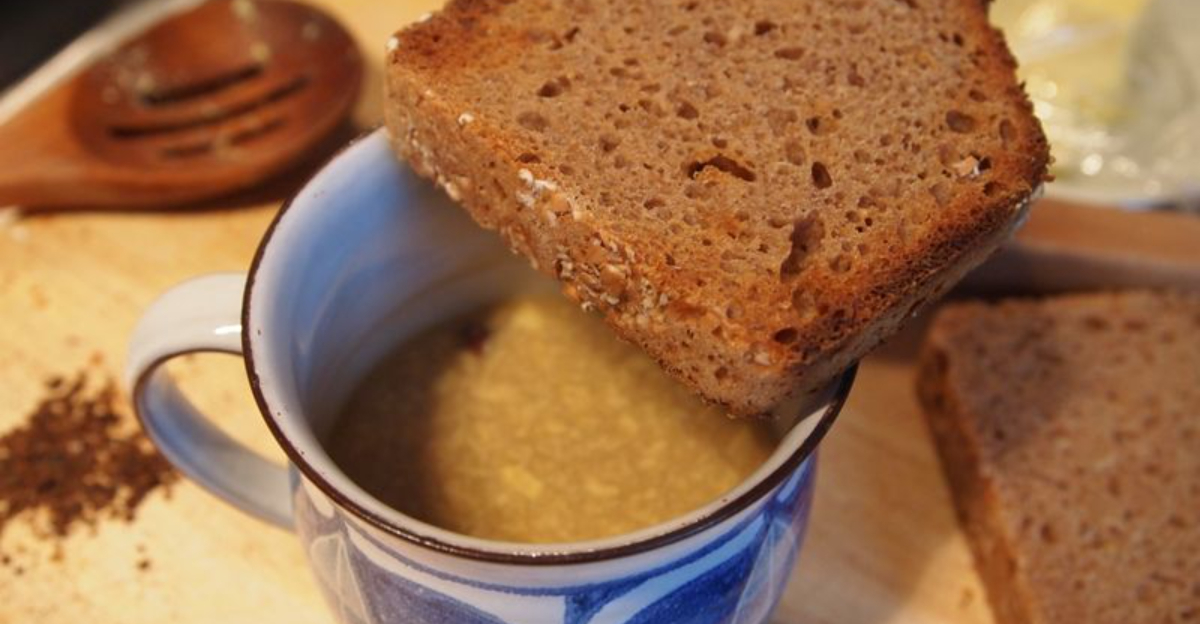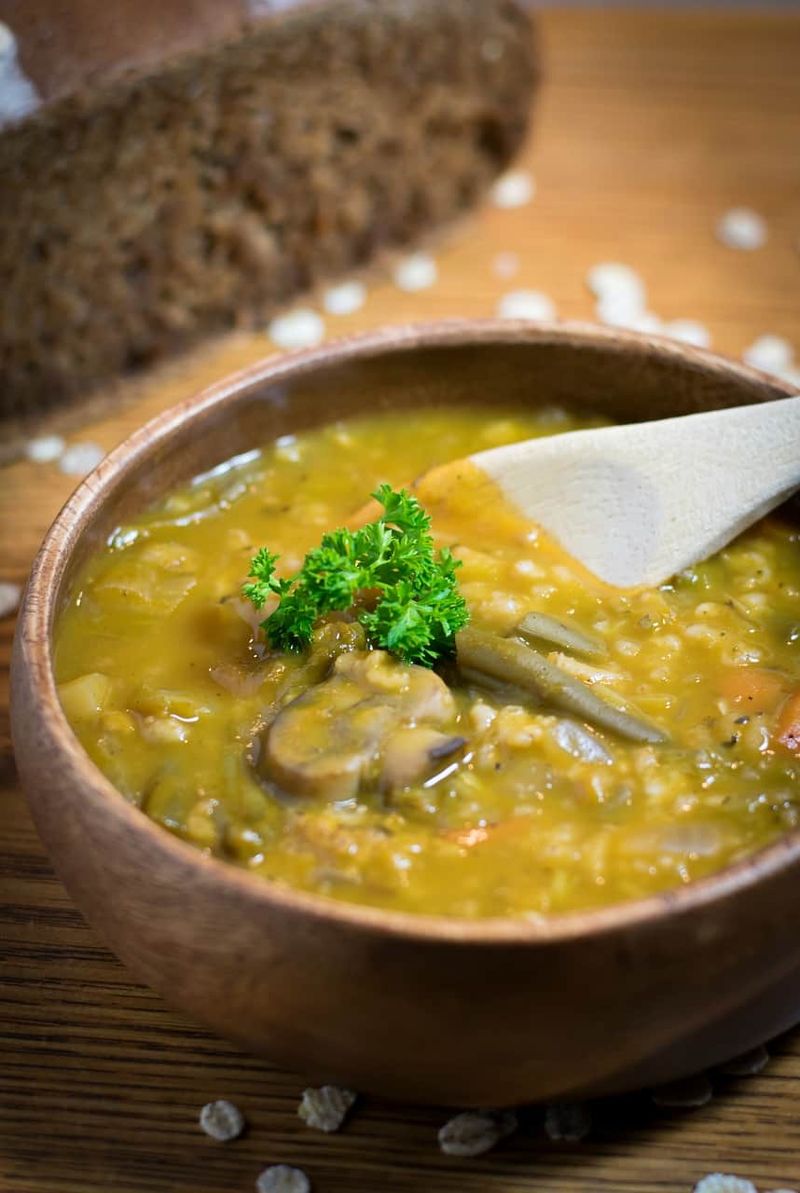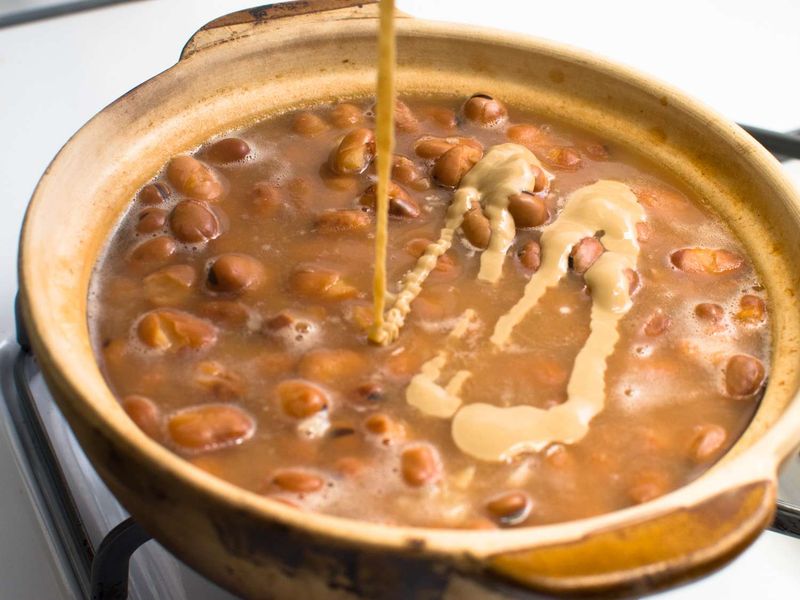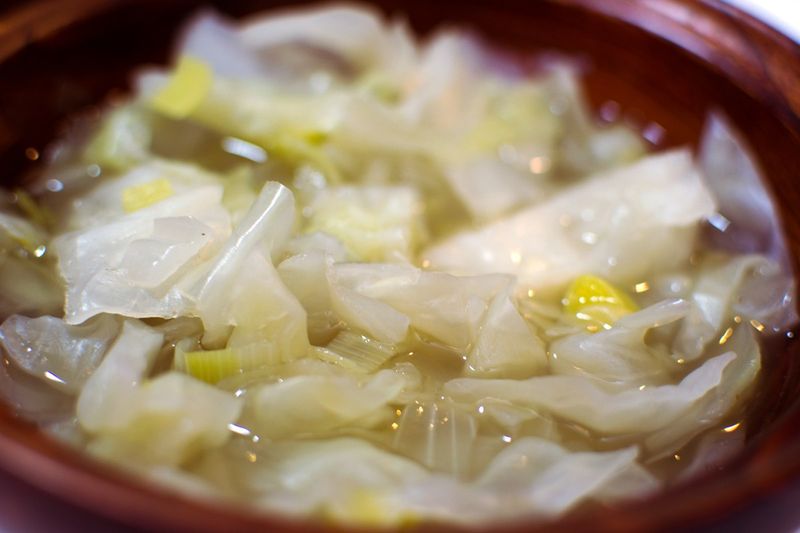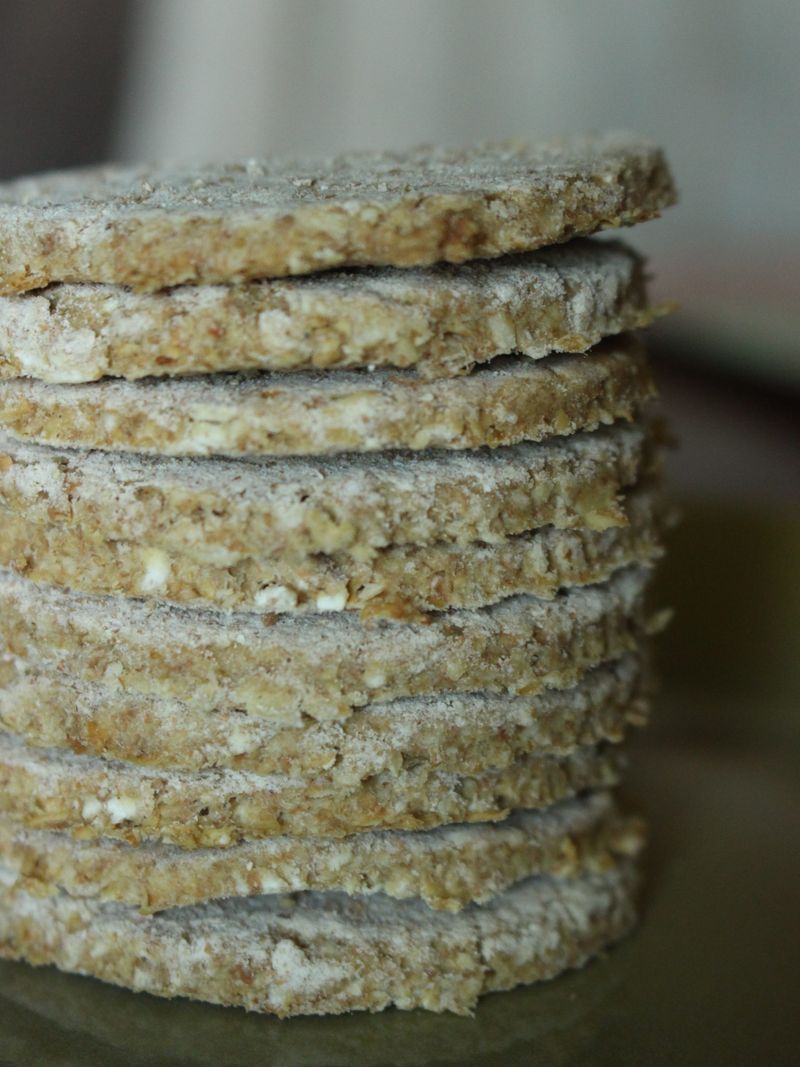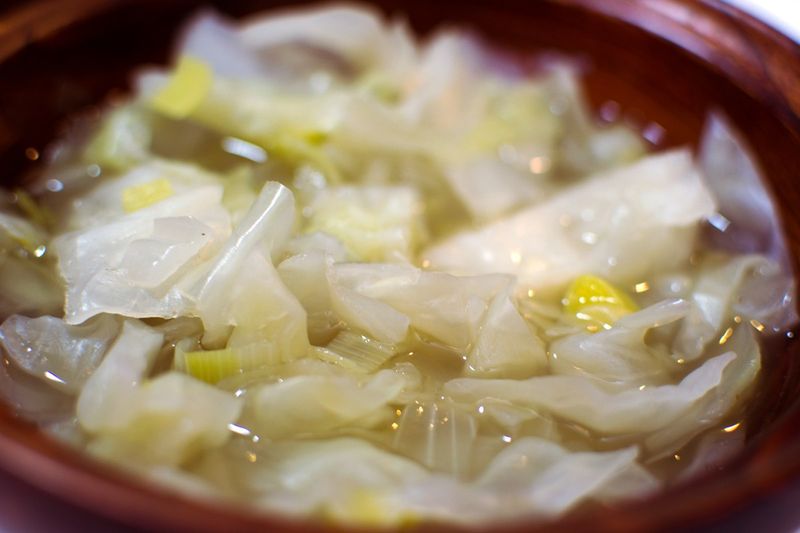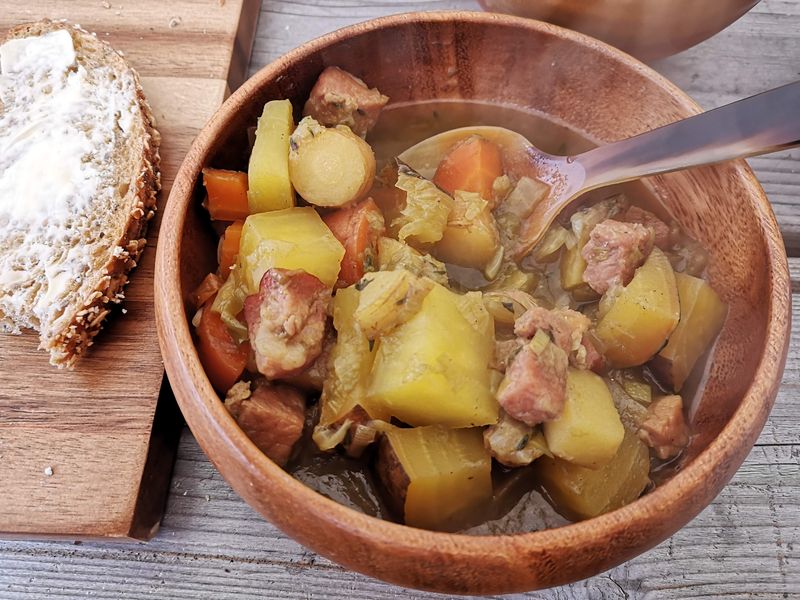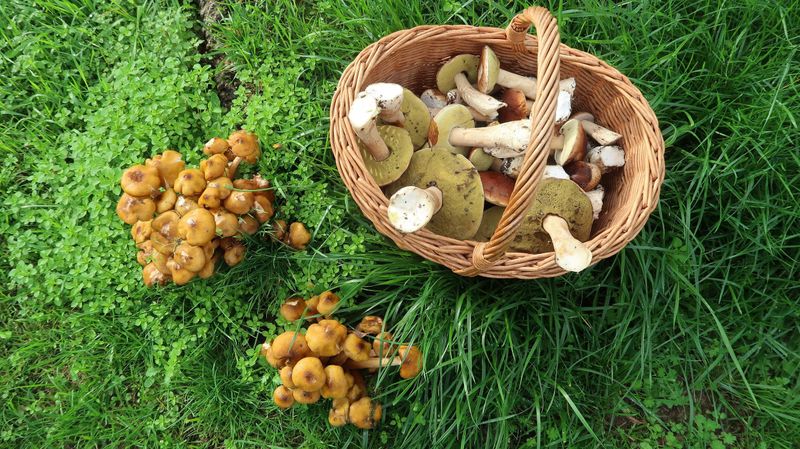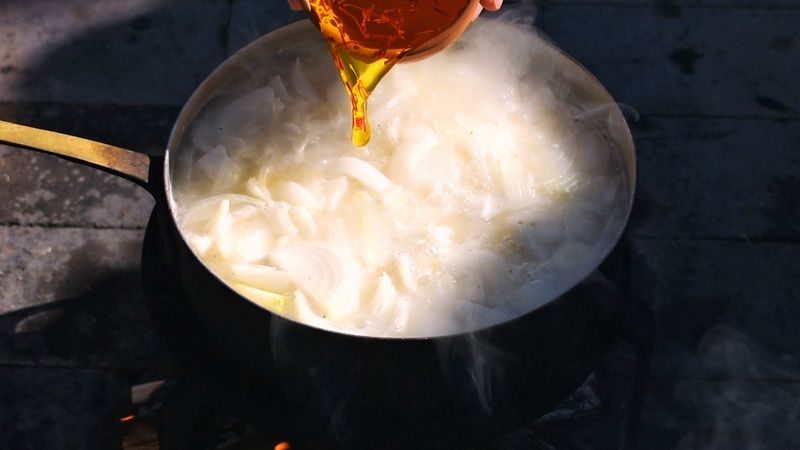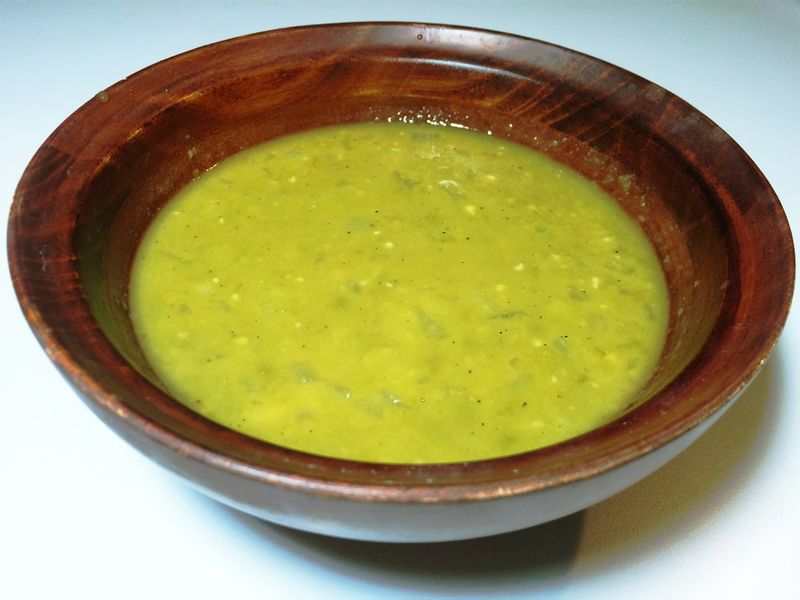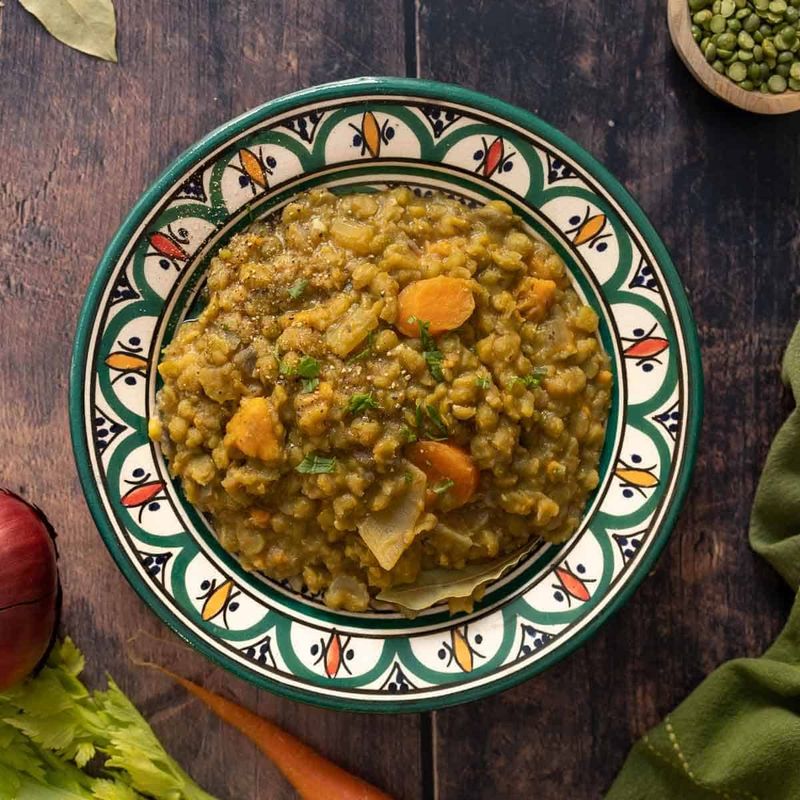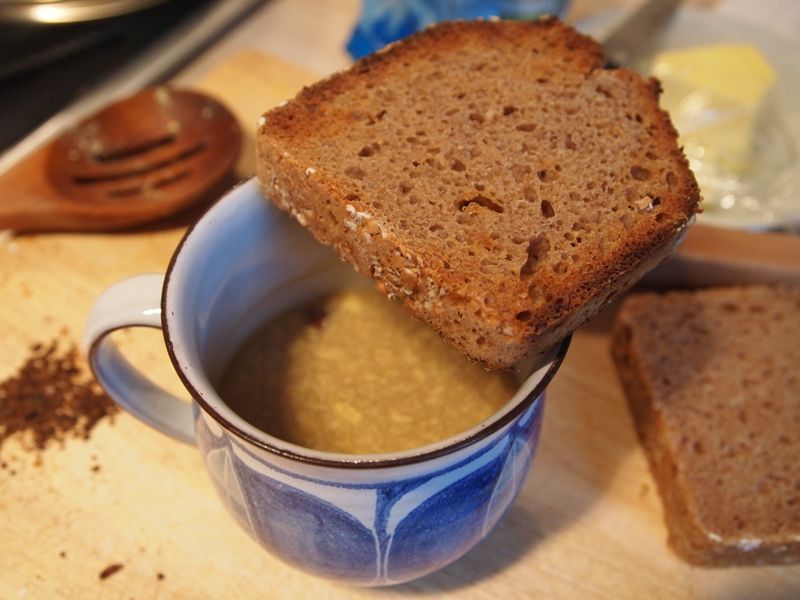Life for medieval peasants wasn’t easy, especially when it came to finding food. With limited resources and backbreaking work, they had to make the most of whatever ingredients they could grow, forage, or trade. These humble meals might seem strange to us today, but they kept generations of ordinary people alive through harsh winters, famines, and the daily grind of medieval life.
1. Pottage: The Medieval One-Pot Wonder
Pottage formed the backbone of the peasant diet, simmering in the hearth pot all day long. This thick, porridge-like stew combined whatever vegetables were available—mostly turnips, carrots, and onions—with beans or peas for protein.
Families would add fresh ingredients as they became available, with the pot rarely emptied completely. The perpetual stew sometimes continued for days or weeks, developing deep flavors that helped mask when ingredients weren’t at their freshest.
2. Barley Bread: Daily Sustenance
Unlike the white bread enjoyed by nobility, peasants relied on rough barley bread that formed the center of almost every meal. Dark, dense, and often flat, this bread contained whatever grain was affordable—usually barley mixed with oats or rye.
After mixing the coarsely ground flour with water and sometimes a bit of salt, peasants shaped flat loaves and baked them in communal ovens or on hot stones. The resulting bread was hard and chewy but filling enough to fuel a day’s labor in the fields.
3. Nettle Soup: Foraged Nutrition
Spring brought the welcome appearance of stinging nettles, which peasants carefully harvested wearing gloves or using sticks. Once boiled, nettles lose their sting but retain impressive nutritional value, providing much-needed vitamins after winter’s scarcity.
Peasants created a simple soup by combining the nettles with water, sometimes adding wild garlic, sorrel, or a handful of oats for thickness. This foraged meal helped prevent scurvy and other deficiency diseases that plagued medieval communities during lean times.
4. Bean Mash: Protein for the Poor
Broad beans (fava beans) grew readily in medieval fields and stored well through winter, making them precious to hungry peasants. After soaking overnight, beans simmered until soft enough to mash into a thick paste.
Peasants seasoned this filling dish with whatever herbs grew nearby—often wild garlic, sage, or thyme. Sometimes served on bread as a morning meal, bean mash provided crucial protein that helped compensate for the limited meat in peasant diets.
5. Cabbage Pottage: Winter Staple
Cabbage thrived in peasant gardens and stored remarkably well, making it a critical winter vegetable. When other foods grew scarce, peasants chopped cabbage and slow-cooked it in the ever-present pottage pot.
The addition of a few dried peas, perhaps an onion, and occasionally a precious bit of salt created a meal that could sustain a family through the coldest months. Some households preserved cabbage as sauerkraut, extending its usefulness even further into winter’s hungry months.
6. Oatcakes: Portable Field Food
When working far from home in the fields, peasants needed food they could carry. Simple oatcakes filled this need perfectly—made by mixing oatmeal with water and a pinch of salt, then cooking the mixture on a hot stone or metal plate.
These flat, round cakes dried hard enough to carry in a pocket without crumbling. Medieval field workers often ate them plain at midday or dunked them in ale to soften the texture. In northern regions where oats grew better than wheat, oatcakes formed the foundation of the peasant diet.
7. Leek Soup: Garden Bounty
Leeks grew abundantly in peasant gardens and became a valued ingredient for their strong flavor and ability to withstand cold weather. Peasants prepared simple leek soup by chopping the entire plant—white bulb and green tops—and simmering it in water.
Adding a handful of oats or barley thickened the broth, creating a satisfying meal from just a few ingredients. Households fortunate enough to own a cow might add a splash of milk for special occasions, transforming this humble soup into something approaching luxury.
8. Rye Porridge: Morning Fuel
Rye thrived in poor soil and cold weather, making it a crucial grain for northern European peasants. Each morning began with a simple porridge made by boiling coarsely ground rye in water until it formed a thick, sticky mass.
During better times, families might sweeten their porridge with honey or wild berries. More often, they ate it plain or with a sprinkle of salt. This filling breakfast provided slow-burning energy for the physically demanding work that defined peasant life.
9. Turnip Stew: Root Cellar Reliance
Turnips became the unsung heroes of winter survival, storing well in root cellars for months. Peasants created a simple but nourishing stew by dicing turnips and cooking them slowly with onions and water.
The starchy turnips released their natural sweetness during cooking, making even the plainest meal somewhat flavorful. Adding turnip greens when available boosted nutritional value tremendously. For special occasions, a family might include a small piece of salt pork for flavor, though meat remained a rare luxury.
10. Acorn Bread: Famine Food
During times of severe grain shortage, peasants turned to the forest floor for survival. Acorns, normally considered animal feed, became emergency flour after careful processing to remove their bitter tannins.
Peasants gathered acorns in autumn, then leached the bitterness out through repeated soaking in water. Once dried and ground, the resulting meal mixed with a small amount of precious grain flour to make dense, dark bread. Though unappetizing by modern standards, acorn bread prevented starvation when crops failed.
11. Mushroom Forage: Woodland Treasures
Foraging skills passed down through generations helped peasants identify safe mushrooms in nearby woodlands. These free forest treasures added rare umami flavor to otherwise bland diets.
Peasants typically added foraged mushrooms to pottage or simply roasted them over open flames. Knowledge of which varieties were edible could mean the difference between a satisfying meal and deadly poisoning. This traditional wisdom became so valuable that families guarded their secret mushroom gathering spots from neighboring villages.
12. Onion Soup: Humble Flavor Booster
Onions grew easily in peasant gardens and stored reliably through winter, making them precious flavor enhancers for bland medieval diets. When a meal contained nothing else, peasants would create a simple onion soup by slowly simmering sliced onions in water.
The long cooking process caramelized the onions, releasing natural sweetness that transformed plain water into something approaching broth. For special occasions like harvest festivals, a family might float a piece of stale bread in the soup and, if extremely fortunate, add a small grating of cheese.
13. Dried Pea Soup: Winter Protein
Dried peas became survival food during winter months when fresh produce disappeared. Peasants harvested peas in summer, dried them thoroughly, and stored them in sacks for the lean season ahead.
Preparing the soup required soaking dried peas overnight, then simmering them until they broke down into a thick, green-gray porridge. The resulting meal lacked visual appeal but provided crucial protein and calories. Some regional variations included wild herbs or a ham bone saved from rare festive occasions.
14. Fruit Pottage: Autumn Abundance
Autumn brought brief abundance as wild apples, pears, and berries ripened in hedgerows and forests. Peasants gathered these fruits eagerly, knowing sweet flavors would soon disappear until next year.
Cooking chopped fruits with a little water created a simple fruit pottage—not quite a dessert by modern standards, but a rare sweet treat in medieval times. Families often added whatever grain they had available, creating a filling porridge sweetened naturally by the fruits’ sugars without requiring precious honey.
15. Ale Soup: Liquid Bread
Weak ale flowed freely in medieval villages, often safer to drink than water from questionable sources. When bread grew scarce, peasants would pour warmed ale over stale bread scraps to create a simple but filling soup.
The brew’s fermentation had already broken down some of the grain’s complex carbohydrates, making nutrients more accessible. Children and adults alike consumed this liquid meal, which provided both hydration and calories. In some regions, an egg might be stirred in if chickens were laying, adding valuable protein.
